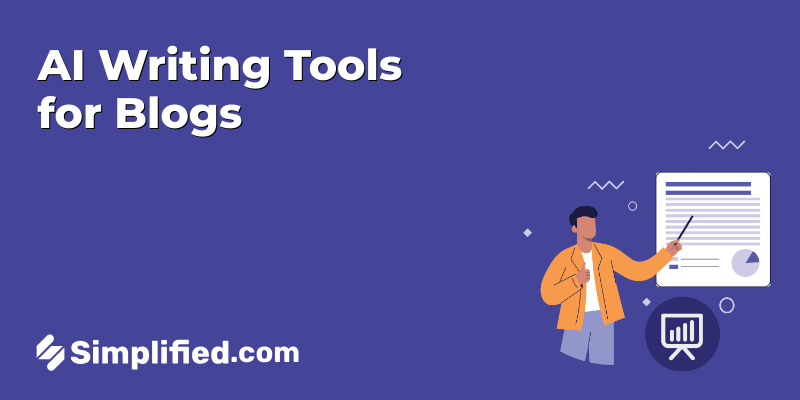Do you often find yourself struggling to write an article summary that’s engaging? Don’t worry, you’re not alone. It can be challenging to condense an entire article into just a few sentences, but with the right tools and some tips, you can do it easily!
This blog post will guide you through the process of quickly summarizing an article and provide you with tips and tricks to effectively summarize long-form content.
What is a Summary?
A summary is a shortened version of a longer piece of text, such as an article, book, or report. Basically, a summary provides an overview of the most important information and ideas presented in the original text, without including all of the details.
The different types of summaries include:
- Descriptive Summary: It provides an overview of the main ideas and key points of a text without any evaluation or interpretation.
- Critical Summary: This evaluates the original text and provides an analysis of its strengths and weaknesses. It may also include the writer’s personal opinion or interpretation.
- Abstract: An abstract is a summary of a research article, thesis, or review of a particular subject. Moreover, it’s often used in academic writing.
- Executive Summary: Finally, an executive summary is a brief overview of a business report, proposal, or other types of document.
How to Write a Summary of an Article in 6 Easy Steps
Writing a summary of an article can seem like a daunting task, but it doesn’t have to be. Here are some steps to follow that will help you write a clear and concise summary of an article:
1. Read the Article Carefully
First, before you can summarize an article, you’ll need to read it carefully. Make sure you understand the main ideas and arguments presented in the article.
2. Identify the Main Idea
Secondly, you’ll need to identify the main idea or thesis statement. This is the most important point the author is trying to make, and it should be the focus of your summary.
3. Highlight Key Points
Next, identify the key points, examples, and supporting details that help to illustrate and explain the main idea.
4. Make a Draft
Once you know the key points, prepare a draft by rephrasing the sentences in your notebook or on your laptop. While taking note of these points, try to use your own words and exclude any insignificant details.
5. Summarize Each Section
Now, it’s time to get to work. In this next step, you’ll have to break the article down into sections and summarize each one in a few sentences. Make sure you include the main ideas and arguments presented in each section.
Here, it’s important to use your own words. Avoid copying and pasting text from the original article. Instead, paraphrase the main ideas and arguments in your own words.
Also, as you summarize is to use tons of transitional words and phrases (such as moreover, thus, and nevertheless) to properly connect your sentences. It’ll make your work easier to read and understand.
Related:
6. Edit and Revise
Done with written your summary? Read it over to make sure it accurately reflects the main ideas and key points of the original text. Edit and revise your work to improve clarity and conciseness.
Related: The 5 Best AI Writers Of 2023 – Ranked and Reviewed
Tips on How to Write a Summary of an Article Effectively
We know how nerve-wracking it feels to try writing a summary that stands out and effectively captures the idea of the original text. So, we’ve laid out a few tips to help you next time you’re faced with this seemingly herculean task.
1. Keep it Concise
A summary should be concise and to the point. Focus on the most important ideas and arguments presented in the article, and avoid including unnecessary details.
2. Check for Accuracy
After you’ve written your summary, read it over and make sure it accurately reflects the main ideas presented in the article.
3. Use Objective Language
A summary should be objective and focus solely on the main ideas and key points of the text. Avoid including your personal opinions or biases in your summary.
4. Use a Plagiarism Checker
Plagiarism in writing is a big no-no, especially in academic writing. This is why you need a good plagiarism checker to ensure that your summary is original, unique, and accurate.
5. Cite your Sources
Whenever you’re summarizing, make sure you cite your sources.
Related: The 3 Best Speed Writers: We Tried Them, And This One Is The Best !
Summarize Articles Effectively with Simplified’s Free Article Summarizer
Are you tired of spending hours staring at a blank screen, struggling to come up with the perfect words for your next article summary? Fret not, because, with Simplified’s AI-powered content creation tools, you can create a high-quality summary in mere minutes.

All you have to do to make this magic happen is enter sections of your article into our free article summarizer! And, in the blink of an eye, you’ll see a perfectly written summary that’s tailored to your needs!
What’s more, we’ve got different tones and styles and writing that fit into any type of summary. So, whether you’re writing an executive/professional summary that needs a formal tone and voice or one that calls for a more light-hearted tone, our free-flow AI Writer has it covered!
Here are some great features of the Simplified article summarizer:
- Plagiarism-free with the inbuilt plagiarism-check tool
- Error-free article summaries with the Grammarly integration feature
- 10+ tones of voice
- 25+ languages
So, what are you waiting for? Check out our AI writer today to write effective summaries and never have to deal with writer’s block ever again.
Try Simplified’s AI Writer today!


























